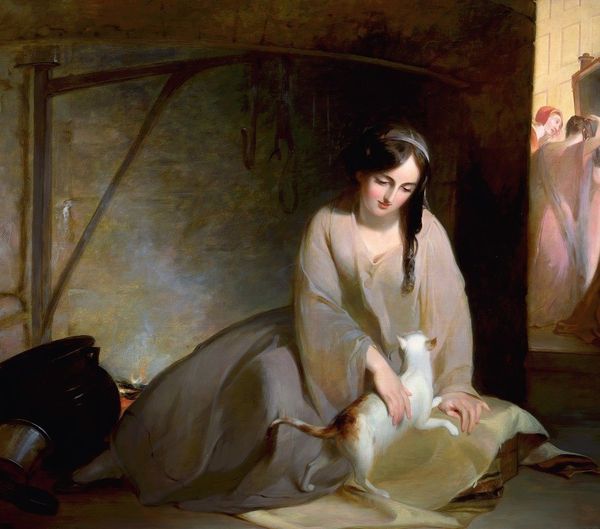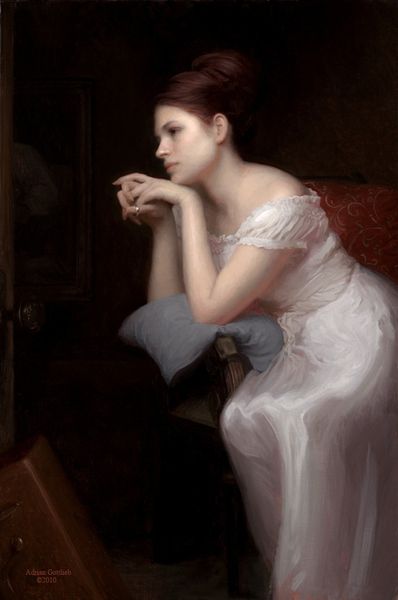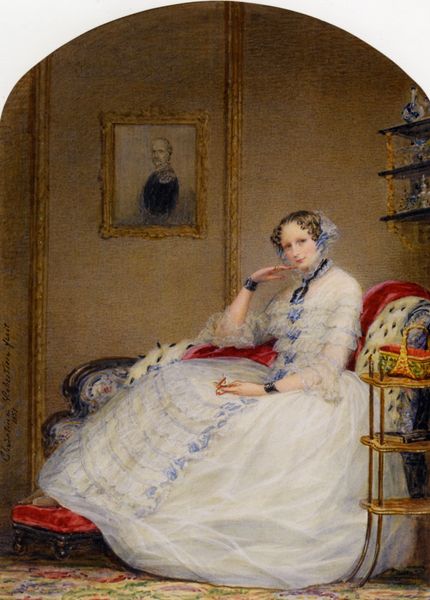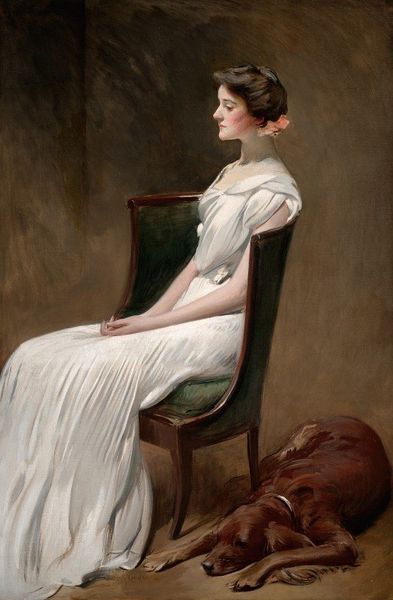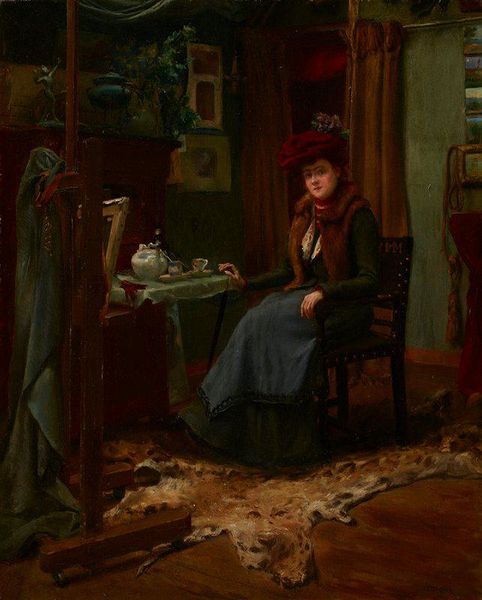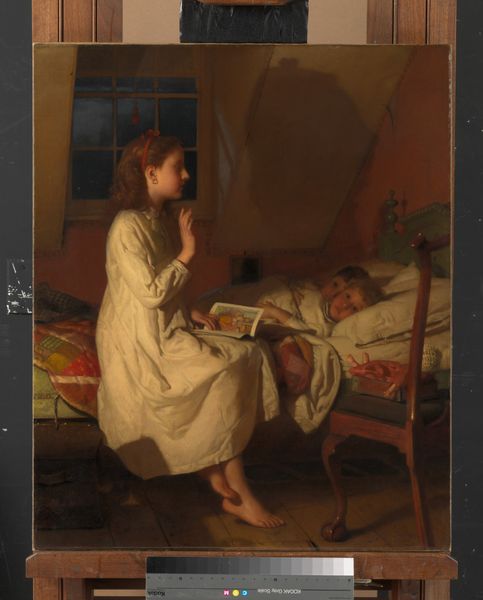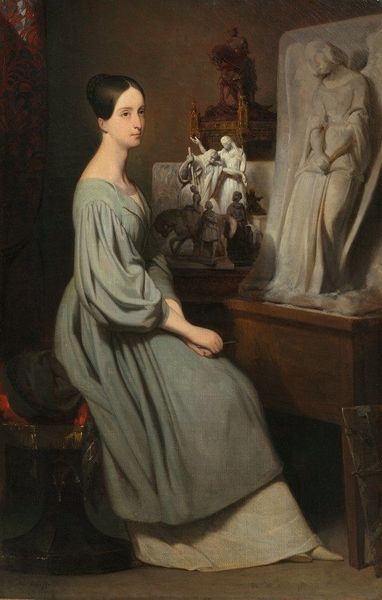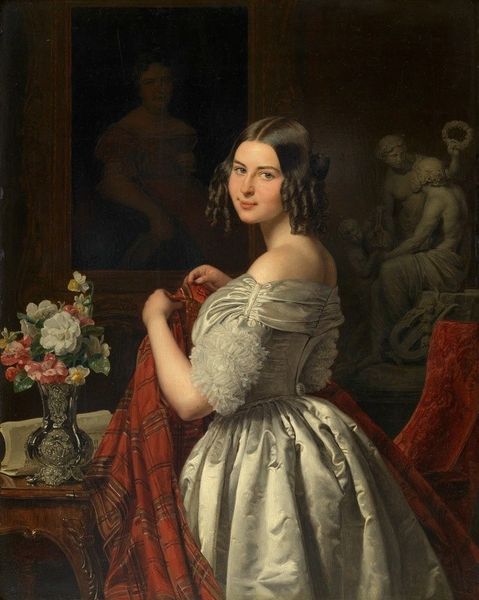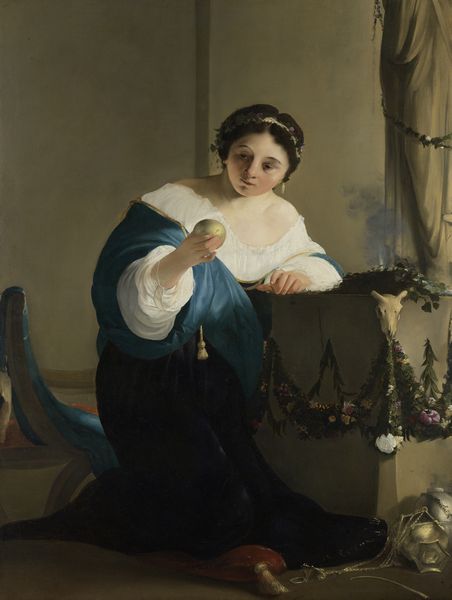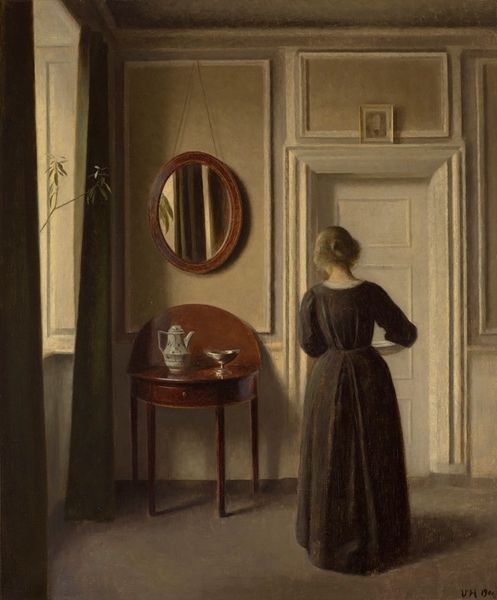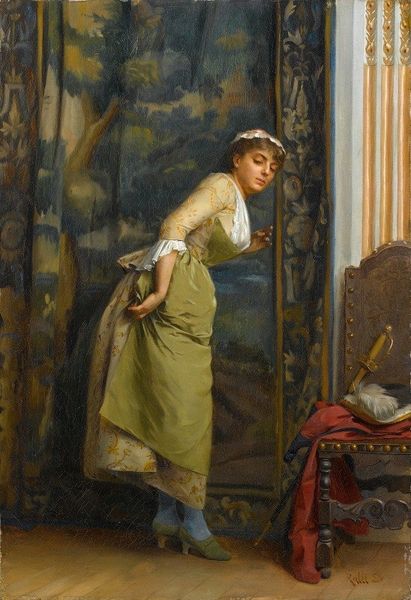
painting, oil-paint
#
portrait
#
figurative
#
neoclacissism
#
painting
#
oil-paint
#
genre-painting
#
history-painting
#
academic-art
Copyright: Public Domain: Artvee
Editor: Here we have Louis Leopold Boilly's "The Artist's Wife in His Studio," painted around 1795-1799 using oil paint. I’m struck by how staged everything feels, and I wonder about that contrast between the apparent spontaneity of the "genre" scene and how deliberate the arrangement of the composition is. What’s your read on it? Curator: The interest lies, precisely, in how Boilly uses formal arrangements to portray an image of relaxed domesticity. Notice how the pyramidal structure created by the easel, the figure of the wife, and the chair, firmly anchors the composition. How does this stable arrangement impact the feeling of the work? Editor: I guess it gives it a sense of balance, of order. It counters the more random feel you might expect from a scene in a working studio. But how do you reconcile that? Curator: Observe how the various textures and forms contrast and complement each other. The soft drapery, the hard plaster casts, the polished wood of the violin… All are carefully rendered, contributing to the painting's overall visual harmony. It all returns to the same effect. Do you see how this meticulous arrangement draws attention to itself? Editor: It does, now that you mention it! It's not just a snapshot of a moment. It is more of a study on shape, color, and texture. This creates tension. Curator: Exactly. Consider the interplay of light and shadow too; notice how the lighting from the lamp picks out these details. How the whole work builds to that apex of light, illuminating the figure's gaze to ours. It transforms the casual scene into something quite deliberate, self-aware, even. Editor: So it's a carefully constructed image of artistic life rather than a truly candid view? That's a helpful reminder not to take what seems like a straightforward representation at face value. Curator: Precisely! Close attention to the internal relationships within the image offers an opportunity to understand more about representation itself.
Comments
No comments
Be the first to comment and join the conversation on the ultimate creative platform.
